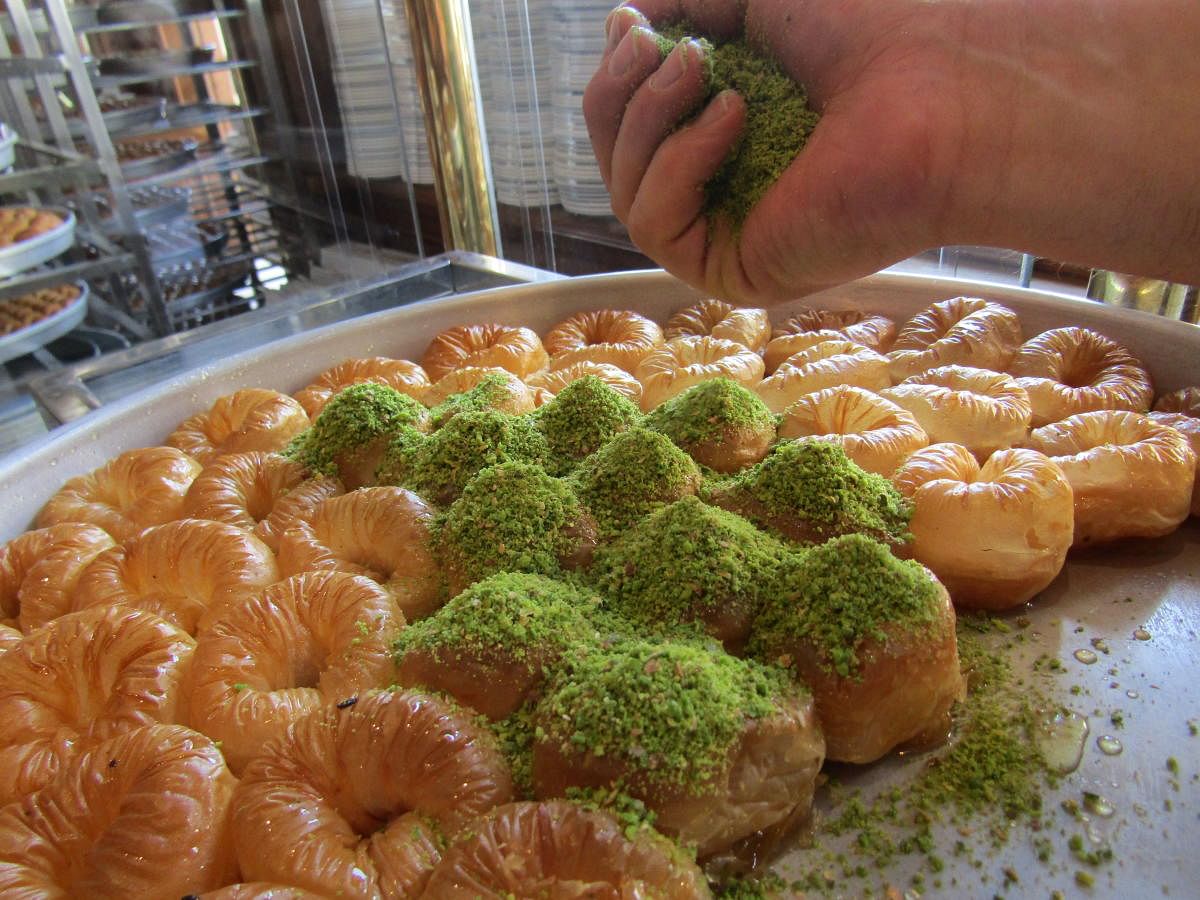
Everyone I know who has returned from Turkey has come back with their own choice of souvenirs — depending on their individual taste or the wishes of the people back home they are shopping for.
But the one item that is common is the baklava. Oh, the baklava! This is the national dessert of the country. It is a rich, sweet, flaky pastry made of layers of filo filled with finely chopped nuts and sweetened and bound or held together with honey or syrup.
Yes, it is Turkey’s national dessert but is also found in other countries of the region i.e. the Middle East, Central Asia, etc.
Greece actually claims a lot of baklava history. However, most locals tell you that nowhere do you get the kind of superb quality and taste that is available in Turkey.
Also, the baklava of Turkey now has a coveted distinction — a Geographical Indication status and protection from the European Union.
Of course, a taste of the delectable baklava is enough to convince you of its special position in the desserts of the world, even if you knew nothing of its awards and distinctions.
Crispy & crunchy
The crunch of the paper-thin, doughy layers; the crispness of the locally grown nuts; the creamy-fresh butter aroma; and the sweet taste of the gooey syrup or honey in which it has been doused — all of them together make for a culinary gem, a luscious dessert. We really didn’t need to know of the EU status to admire and rave about the baklavas we ate in Turkey.
The baklava is native to Turkey, the locals told us and also added that the rich, fine version of the baklava you find in Turkey’s finest stores today was developed in the imperial kitchens of Topkapi Palace during the Ottoman Empire by their pastry chefs. It was a rich man’s indulgence and a decadent treat that was largely enjoyed by the aristocracy. Later, it became widely available to locals and today there are lakhs of pastry shops and restaurants across the country where the baklava is available. You can find a baklava shop in virtually every corner of Turkey.
You will get boxes with either just one variety or one which contains an assortment of various kinds of baklava. Most of the top pastry shops and restaurants in Gaziantep are a good place to purchase this or you can visit the legendary Grand Bazaar in Istanbul. In Turkey baklava is eaten as a dessert after a meal (lunch or dinner), with Turkish coffee or tea in the morning or as a sweet snack in the evening.
Undeniable fame
We were also told that the historical city of Gaziantep had the first settlement which introduced baklava in Anatolia region of Turkey.
Some historians question this theory but it is undeniable that Gaziantep’s baklavas are among the finest in the world since they are filled with pistachios which are grown here in large quantities. In fact, besides baklava, you can see mounds of pistachios and walnuts in stores across the city. Even small stores in bylanes have sacks overflowing with nuts and various spices in Istanbul, too as well as across the rest of Turkey.
Have your fill
However, baklava is not made only with pistachio nuts. In some areas you find baklava stuffed with walnuts; in others with almonds and even hazelnuts in other places. As with all famous dishes, the baklava has also been experimented with and so you find innovations.
Hence there are unusual fillings such as apricots, ground cookies, chocolate, etc.
Going by taste and ingredients, you have the Turkish pistachio baklava, cashew baklava, walnut baklava or cevizli baklava, bulbul yuvasi (circular shaped and which looks a little like our Indian badushah sweet), palace baklava, Fistik Sarma (a thin cylindrical shape and which looks like the pistachio roll we get in India), birds nest, fistikli baklava, the light and milky sutlu nuriye, chocolate baklava (a fusion version) and the dry baklava or kurubaklava which has a longer shelf life. Besides, given the modern trends, the makers are also catering to vegans and the calorie-conscious. So, you have varieties like sugar-free baklava, vegan baklava, etc. The sweet also comes in a wide variety of shapes — so there is the rectangular baklava, round baklava, square baklava, diamond-shaped version, carrot-slice baklava and so on.
The preparation of the baklava is a painstaking and time-consuming process and calls for much skill and experience. It involves working in rooms where the temperature is high and the perspiring chefs and assistants work without heeding this condition.
Watching this process gave us an insight into the tremendous effort that goes into making this delicacy. The Imam Cagdas is a good place to witness the process as are a few other restaurants in Gaziantep and Istabul which make and sell the baklava in-house.
The chefs make a dough, then roll out the dough and prepare paper-thin slices. Finely chopped nuts are spread out in between the filo layers.
These are then dressed with butter, baked and finally sweetened by being doused in sugar syrup or honey.
The syrup is often flavoured with cardamom or cinnamon or rose water.
Whether you get to watch the process or not, be sure to savour the baklava while you are there in Turkey and bring back as much as you can.